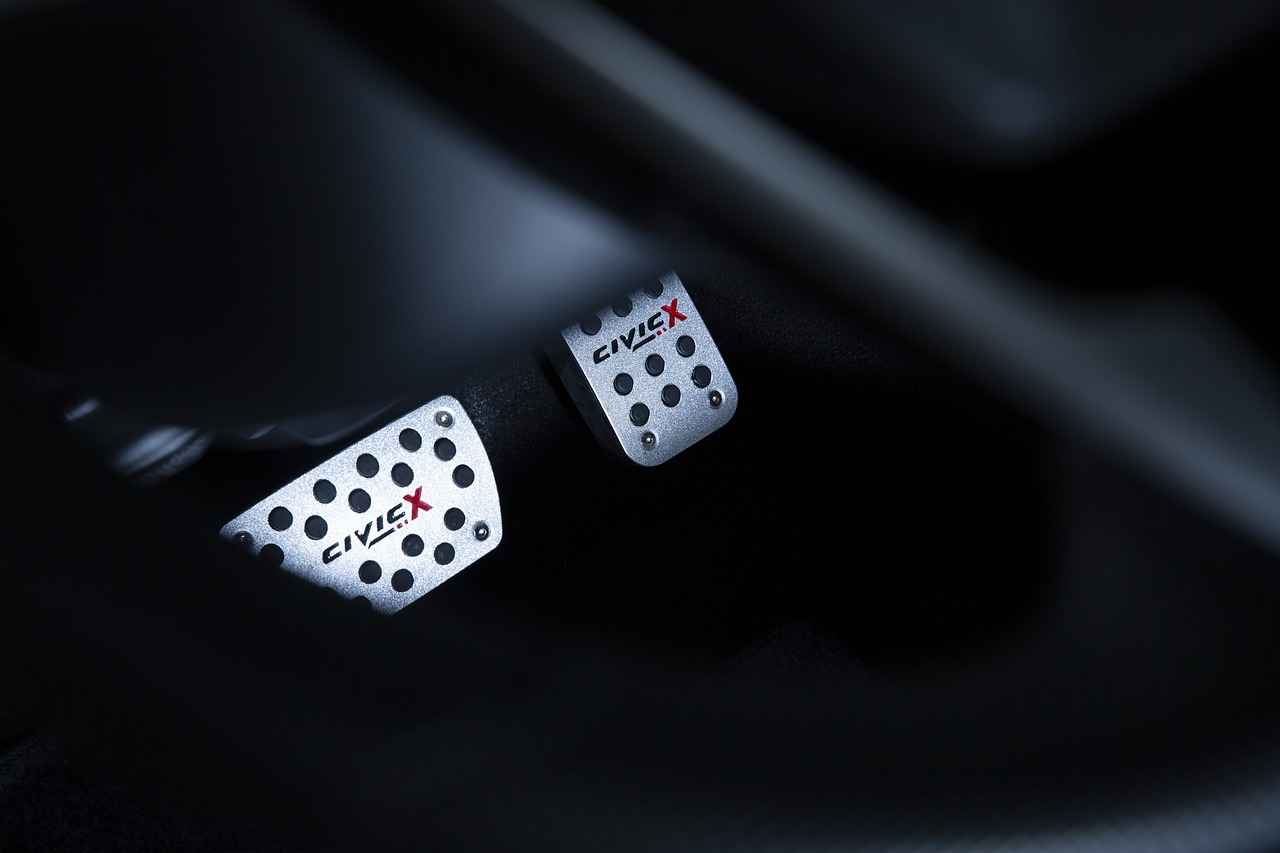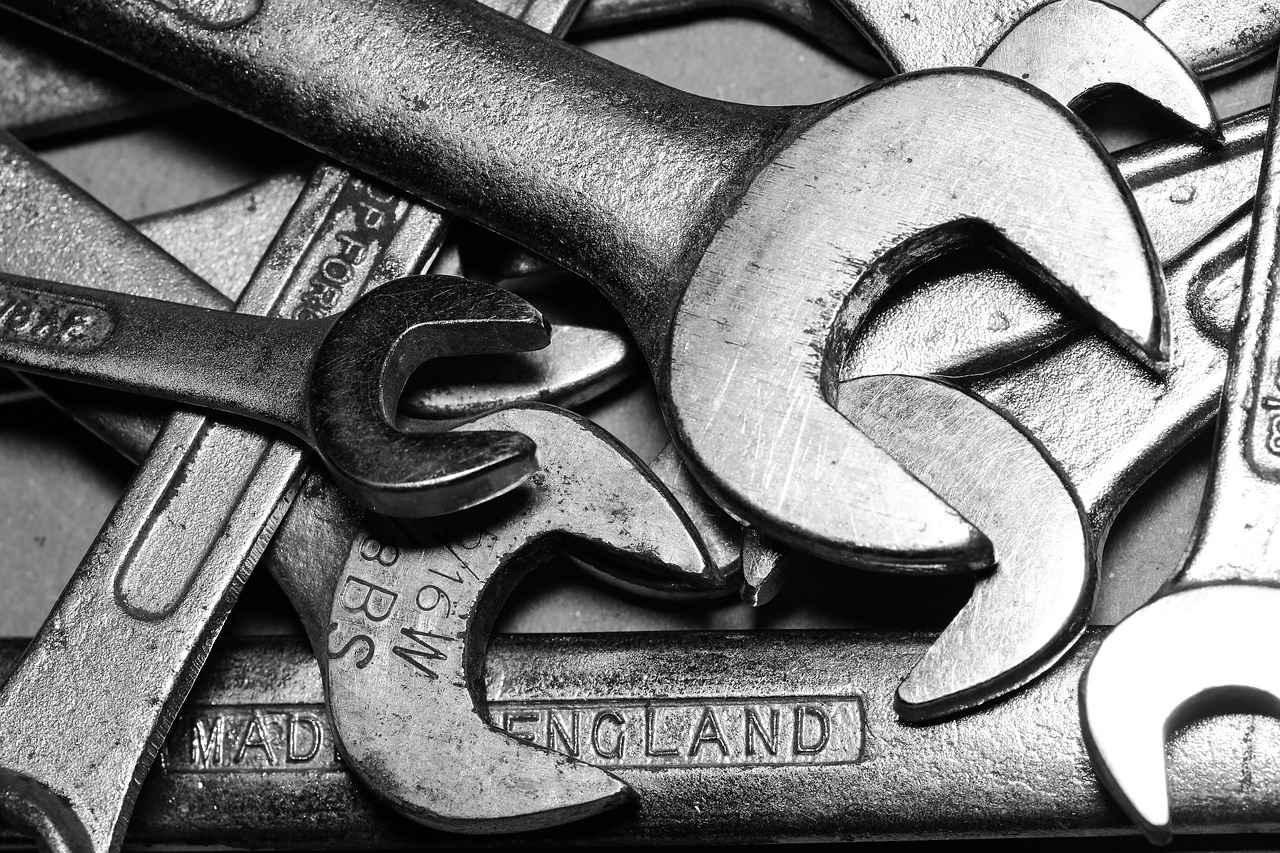This article explores the common reasons behind a whining noise in Honda Accords, providing insights into potential issues, maintenance tips, and guidance on when to seek professional help.
Understanding the root causes of whining noises can significantly aid in diagnosing issues early. Common culprits include:
- Power Steering System
- Transmission Problems
- Engine-Related Issues
A whining noise while turning could indicate problems within the power steering system. Low fluid levels or a failing pump are common issues that can contribute to this noise.
Checking the power steering fluid levels is a straightforward process:
1. Locate the power steering reservoir.2. Remove the cap and check the fluid level against the markings.3. If low, add the recommended fluid type.
Recognizing the symptoms of a failing power steering pump is crucial. Watch for:
- Unusual noises when turning the steering wheel
- Difficulty steering or a stiff steering wheel
- Fluid leaks around the pump area
Transmission problems can also lead to whining noises. These issues may arise from:
- Low transmission fluid
- Mechanical failures within the transmission system
Identifying common symptoms of transmission issues is essential for early intervention. Look out for:
- Slipping gears during acceleration
- Unusual whining or grinding noises
Regular maintenance can prolong the life of your transmission. Here are some essential tips:
- Change the transmission fluid as recommended by the manufacturer.
- Inspect the transmission for leaks and wear.
Engine-related issues can also produce whining sounds. Problems with components such as:
- Belt wear
- Worn bearings
can lead to noise production.
Regularly inspecting your engine belts can help prevent whining noises. Here’s what to look for:
1. Check for cracks or fraying on the belt surface.2. Ensure the belt is properly tensioned.3. Replace worn belts promptly to avoid further issues.
Bearing wear can lead to whining sounds in the engine. Signs of bearing issues include:
- Unusual noises that change with engine speed
- Vibrations felt in the steering wheel or floor
Determining when to consult a mechanic is crucial for maintaining your vehicle’s health. Signs that indicate you should seek professional help include:
- Persistent whining noises that do not resolve with fluid checks
- Difficulty steering or unusual transmission behavior
- Visible fluid leaks or other alarming symptoms
Addressing these issues promptly can prevent more serious problems down the line.

What Causes a Whining Noise in My Honda Accord?
When it comes to your Honda Accord, a whining noise can be more than just an annoyance; it may signal underlying issues that require attention. Understanding the root causes of these sounds is essential for maintaining your vehicle’s health and ensuring a safe driving experience. In this section, we will explore the most common reasons for whining noises, which include problems with the power steering system, transmission, and engine components.
Whining noises can arise from various parts of your vehicle, and identifying the source is crucial for timely diagnosis and repair. Here are the primary culprits:
- Power Steering System: A whining noise when turning the steering wheel often indicates issues with the power steering system. Low fluid levels or a failing power steering pump can lead to this noise. It’s important to regularly check fluid levels and inspect the pump for any signs of wear.
- Transmission Problems: Transmission-related whining can stem from low fluid levels or mechanical failures within the transmission itself. This noise may be accompanied by other symptoms, such as slipping gears or difficulty shifting. Regular maintenance is key to preventing transmission issues.
- Engine-Related Issues: Whining sounds can also originate from the engine, particularly from worn belts or bearings. These components may degrade over time, leading to increased friction and noise. Regular inspections can help identify problems before they escalate.
If you’re experiencing a whining noise while turning, the power steering system is a likely suspect. The sound may indicate that the power steering fluid is low or that the pump is failing. Both conditions can affect steering performance and safety.
Checking your power steering fluid levels is a straightforward task. Begin by locating the power steering reservoir under the hood. Remove the cap and check the fluid level against the markings on the dipstick. If the fluid is below the recommended level, top it off with the appropriate fluid type.
Watch for symptoms such as changes in noise pitch or difficulty steering, which may indicate a failing power steering pump. If you notice these signs, it’s advisable to consult a mechanic promptly to avoid further damage.
Transmission problems can lead to whining noises that may become more pronounced during acceleration. Identifying these issues early can save you from costly repairs down the line.
Common symptoms of transmission issues include whining noises, slipping gears, and unusual vibrations. If you experience any of these signs, it’s essential to have your vehicle inspected by a professional.
Regular maintenance, such as fluid changes and inspections, can significantly extend the life of your transmission. Follow your manufacturer’s guidelines for service intervals and consider having a professional evaluate your transmission periodically.
Engine-related issues can also produce whining sounds, often due to worn belts or bearings. Addressing these concerns early can prevent further complications.
Regular inspection of engine belts is crucial for early detection of wear. Look for cracks, fraying, or signs of excessive wear. If you notice any issues, replace the belts promptly to avoid further damage.
Bearings in the engine can wear down over time, leading to increased friction and whining noises. If you suspect bearing issues, it’s essential to seek professional help to assess and repair the problem.
Knowing when to consult a mechanic is vital for your vehicle’s health. If you notice persistent whining noises or any accompanying symptoms, don’t hesitate to seek professional assistance. Early intervention can save you time and money in the long run.

Is the Power Steering System the Culprit?
When experiencing a whining noise while turning your Honda Accord, it is essential to consider the power steering system as a potential culprit. This sound often indicates underlying issues that, if left unaddressed, can lead to more significant problems. In this section, we will explore how low fluid levels and a failing pump can contribute to this irritating noise, and what steps you can take to rectify the situation.
The power steering fluid is crucial for the proper functioning of the steering system. If the fluid level is low, it can lead to a whining noise when turning the steering wheel. Here’s how to check your power steering fluid levels:
- Locate the power steering reservoir, usually marked with a steering wheel icon.
- Ensure the engine is off and the vehicle is on a level surface.
- Open the reservoir cap and check the fluid level against the markings.
- If the fluid is below the recommended level, add the appropriate type of power steering fluid.
A failing power steering pump can also produce a whining noise. Recognizing the symptoms early can save you from costly repairs. Here are some signs to watch for:
- Increased noise: A loud whining or groaning noise while turning can indicate pump failure.
- Stiff steering: Difficulty in steering may suggest that the pump is not delivering adequate pressure.
- Fluid leaks: Puddles of fluid under the vehicle may point to a pump that needs replacement.
Several factors can lead to a decrease in power steering fluid levels:
- Leaks: Hoses and seals can wear out over time, leading to fluid leaks.
- Contamination: Dirt and debris can enter the system, causing fluid to degrade and necessitating a change.
- Age: Older vehicles may experience more wear and tear on the power steering components.
If you notice a persistent whining noise despite checking the fluid levels and inspecting the pump, it may be time to consult a professional mechanic. They can perform a thorough diagnosis to determine the exact cause of the noise and recommend necessary repairs. Ignoring these symptoms can lead to more severe issues, including complete power steering failure.
In summary, a whining noise while turning your Honda Accord is often a sign of power steering issues. By understanding the importance of checking fluid levels and recognizing the signs of a failing pump, you can take proactive steps to maintain your vehicle’s health. Regular maintenance and timely intervention can help you avoid more extensive repairs down the line.
How to Check Power Steering Fluid Levels?
Maintaining adequate power steering fluid levels is essential for the smooth operation of your Honda Accord. Low fluid levels can lead to serious issues, including increased wear on the power steering pump and difficulty steering. This guide will walk you through the straightforward process of checking your power steering fluid levels, ensuring your vehicle remains in top condition.
Power steering fluid plays a crucial role in the hydraulic system that assists with steering. Low fluid levels can cause the steering system to overheat and potentially lead to pump failure. Regular checks can help you avoid costly repairs and ensure safe driving.
- Park Your Vehicle: Ensure your Honda Accord is on a level surface and turn off the engine. Wait a few minutes to allow the fluid to settle.
- Locate the Power Steering Reservoir: Open the hood and find the power steering fluid reservoir. It is usually labeled and located near the engine.
- Check Fluid Level: Remove the cap and check the fluid level against the markings on the reservoir. The fluid should be between the “MIN” and “MAX” lines.
- Inspect Fluid Condition: Look at the color and consistency of the fluid. It should be a clear, reddish color. If it appears dark or has debris, it may need to be replaced.
- Add Fluid if Necessary: If the fluid is low, add the recommended power steering fluid until it reaches the appropriate level. Be careful not to overfill.
- Replace the Cap: After checking or adding fluid, securely replace the cap on the reservoir.
- Whining Noise: A whining sound when turning the steering wheel can indicate low fluid levels.
- Stiff Steering Wheel: Difficulty in turning the wheel is often a sign of insufficient fluid.
- Fluid Leaks: Puddles of fluid under your vehicle could indicate a leak in the power steering system.
If you notice persistent issues such as unusual noises or steering difficulties even after checking the fluid, it may be time to consult a mechanic. Professional diagnostics can identify underlying problems that may not be visible during a casual inspection.
By following these simple steps, you can ensure that your power steering system operates smoothly, enhancing the overall driving experience of your Honda Accord. Regular maintenance checks not only help in identifying potential issues early but also contribute to the longevity of your vehicle.
Signs of a Failing Power Steering Pump
When it comes to maintaining your vehicle, recognizing the symptoms of a failing power steering pump is essential for ensuring safety and functionality. The power steering system plays a crucial role in vehicle maneuverability, making it vital to address any issues promptly. This section will explore the key warning signs that indicate your power steering pump may be failing, including changes in noise and steering difficulties.
- Whining Noise: One of the most common indicators of a failing power steering pump is a whining or groaning noise when turning the steering wheel. This noise often intensifies when the wheel is turned sharply.
- Steering Difficulty: If you experience increased resistance when turning the steering wheel, it may suggest that the pump is not providing adequate hydraulic pressure.
- Fluid Leaks: Check for puddles of fluid under your vehicle or around the power steering components. Low fluid levels can lead to pump failure.
- Unusual Vibrations: If you notice vibrations in the steering wheel, this might indicate that the pump is struggling to maintain proper pressure.
- Steering Wheel Stiffness: A stiff steering wheel, especially at low speeds, can be a clear sign that the power steering pump is failing.
Identifying the symptoms early can prevent further damage to your vehicle and ensure your safety on the road. Ignoring these signs may lead to more severe issues, such as complete power steering failure, which can make the vehicle difficult to control.
Maintaining proper fluid levels is crucial for the health of your power steering system. To check your power steering fluid levels:
- Locate the power steering reservoir, usually marked with a steering wheel icon.
- Remove the cap and check the fluid level against the markings on the side of the reservoir.
- If the fluid is low, add the recommended type of power steering fluid.
If you notice any of the symptoms mentioned above, it is advisable to consult a professional mechanic. They can perform a thorough inspection and determine whether the power steering pump needs to be repaired or replaced. Prompt action can save you from costly repairs and ensure your vehicle remains safe to drive.
In summary, being aware of the signs of a failing power steering pump is essential for maintaining your vehicle’s performance and safety. Regular checks and timely interventions can help keep your Honda Accord running smoothly.

Could Transmission Issues Be the Cause?
When it comes to the performance of your Honda Accord, transmission issues can be a significant concern. One common symptom that drivers may notice is a whining noise emanating from the vehicle. Understanding the potential causes of this noise can help you address the issue before it escalates into a more serious problem.
Whining noises in your Honda Accord can often be attributed to transmission fluid issues or mechanical failures. These issues can manifest in various ways, and recognizing the signs early can save you time and money in repairs.
One of the most common causes of whining noises is low transmission fluid levels. Transmission fluid plays a crucial role in lubricating and cooling the internal components of the transmission. When the fluid level is low, it can lead to increased friction and heat, resulting in a whining sound. Regularly checking your transmission fluid levels can help prevent this issue.
In addition to fluid issues, mechanical failures within the transmission can also lead to whining noises. Problems such as worn gears, damaged bearings, or a failing torque converter can create a distinct whining sound during operation. If you notice this noise, it is essential to have your transmission inspected by a professional.
- Slipping Gears: If your vehicle unexpectedly changes gears or slips out of gear, it could indicate transmission trouble.
- Delayed Engagement: A noticeable delay when shifting from park to drive or reverse can also signal a problem.
- Unusual Noise: Besides whining, grinding or clunking noises can indicate serious transmission issues.
To keep your transmission in optimal condition and prevent whining noises, consider these maintenance tips:
- Regular Fluid Changes: Change your transmission fluid according to the manufacturer’s recommendations to ensure proper lubrication.
- Routine Inspections: Have your transmission inspected regularly for signs of wear and tear.
- Address Issues Promptly: If you notice any unusual noises or performance issues, consult a mechanic immediately.
If you are experiencing a whining noise in your Honda Accord, it is crucial to determine when to seek professional help. If the noise persists despite checking fluid levels and performing basic maintenance, it is advisable to consult a qualified mechanic. They can conduct a thorough diagnostic to identify the underlying cause of the noise and recommend appropriate repairs.
In conclusion, understanding the potential causes of whining noises in your Honda Accord can help you maintain your vehicle’s performance and longevity. By being proactive and addressing issues early, you can avoid costly repairs and ensure a smooth driving experience.
What Are Common Transmission Symptoms?
When it comes to your vehicle’s performance, identifying common symptoms of transmission issues is vital for ensuring safety and reliability. Early detection can save you from costly repairs and potential breakdowns on the road. Below, we will explore various signs indicative of transmission problems, helping you recognize when it’s time to take action.
Understanding the symptoms of transmission issues can empower you as a driver. Some common signs include:
- Slipping Gears: If your Honda Accord unexpectedly changes gears or feels like it’s slipping out of gear while driving, this could indicate a serious transmission issue.
- Unusual Noises: Sounds such as whining, clunking, or grinding during acceleration can be a red flag. These noises often suggest that internal components are not functioning correctly.
- Delayed Engagement: If you notice a delay when shifting from park to drive or reverse, it may mean that the transmission fluid is low or the transmission itself is failing.
- Fluid Leaks: Puddles of red or brown fluid under your vehicle can indicate a transmission fluid leak, which can lead to severe problems if not addressed promptly.
- Warning Lights: Pay attention to any dashboard warning lights. If the transmission light illuminates, it’s essential to have your vehicle inspected as soon as possible.
Diagnosing transmission problems can be complex, but here are some steps to help you:
- Check Fluid Levels: Start by checking the transmission fluid levels. Low fluid can lead to overheating and damage.
- Inspect for Leaks: Look for any signs of fluid leaks underneath your vehicle. If you find any, it’s crucial to address them immediately.
- Listen for Noises: Pay attention to any unusual sounds while driving. If you hear whining or clunking, note when they occur, as this can help mechanics diagnose the issue.
If you notice any of the symptoms mentioned above, it’s essential to take action:
- Consult a Professional: Even if you feel confident in your assessment, it’s wise to consult a professional mechanic. They can conduct a thorough inspection and provide expert advice.
- Regular Maintenance: Keeping up with regular maintenance can help prevent transmission issues. Ensure fluid changes are done according to your vehicle’s maintenance schedule.
- Document Symptoms: Keep a record of any symptoms, including when they occur and under what conditions. This information can be invaluable to your mechanic.
In summary, being aware of the common symptoms of transmission issues can significantly impact your vehicle’s longevity and your safety on the road. By promptly addressing these signs, you can ensure a smoother driving experience and avoid more significant problems down the line.
How to Maintain Transmission Health?
Maintaining your vehicle’s transmission is crucial for ensuring its longevity and optimal performance. Regular maintenance can significantly prolong the life of your transmission, preventing costly repairs and enhancing your driving experience. Here, we will explore essential tips for fluid changes and inspections to keep your transmission running smoothly.
The transmission is a vital component of your vehicle, responsible for transferring power from the engine to the wheels. Neglecting its maintenance can lead to severe issues, including slipping gears, overheating, and even complete transmission failure. By prioritizing maintenance, you can avoid these problems and ensure a smoother ride.
Transmission fluid should be changed according to your vehicle’s manufacturer recommendations, typically every 30,000 to 60,000 miles. However, if you notice signs such as dark or burnt fluid, or if your vehicle is experiencing issues like hard shifting, it may be time for a change sooner. Regular fluid changes help keep the transmission clean and functioning efficiently.
- Start your vehicle and let it warm up.
- Locate the transmission dipstick (usually near the engine).
- Pull out the dipstick, wipe it clean, and reinsert it.
- Remove it again to check the fluid level; it should be within the marked range.
- If low, add the recommended transmission fluid.
Being proactive about maintenance means knowing the warning signs of potential transmission issues. Look out for:
- Unusual noises: Grinding or whining sounds can indicate internal problems.
- Delayed engagement: If your vehicle hesitates before shifting into gear, it could signal a fluid issue.
- Fluid leaks: Puddles of red or brown fluid under your vehicle warrant immediate attention.
Regular inspections can help identify issues before they escalate. Here’s how to perform a basic inspection:
1. Check the transmission fluid color and smell.2. Look for leaks around the transmission pan.3. Inspect the transmission mount for signs of wear.4. Listen for any unusual noises while driving.
If you’re unsure about performing maintenance yourself, consider seeking professional help. A qualified mechanic can provide a thorough inspection and perform necessary services, ensuring your transmission remains in top condition. Investing in professional maintenance can save you money in the long run by preventing major repairs.
In summary, maintaining your transmission is essential for the overall health of your vehicle. By regularly checking fluid levels, changing the fluid as needed, and being aware of potential issues, you can keep your transmission running smoothly for years to come.

Are Engine Problems Responsible for the Noise?
When it comes to diagnosing issues in your Honda Accord, engine-related problems can often manifest as a whining noise.
This section explores the various components of the engine that may contribute to such sounds, particularly focusing on belts, bearings, and other critical parts.
Several components within the engine can produce a whining sound when they are malfunctioning or worn out. The most common culprits include:
- Serpentine Belts: These belts drive multiple components in the engine, and if they become worn or loose, they can create a high-pitched whining sound.
- Bearings: Engine bearings support rotating parts. If they wear down, they can produce a whining or grinding noise as metal rubs against metal.
- Alternator: A failing alternator can also generate a whining sound, particularly if the bearings within it are damaged.
- Water Pump: If the water pump is failing, it may produce a whining noise that indicates it is struggling to circulate coolant.
To determine if the serpentine belt is the source of the whining noise, listen for the sound when the engine is idling and when you rev the engine. If the noise increases with engine speed, it is likely that the belt is the issue.
Additionally, visually inspect the belt for signs of wear, such as cracks or fraying. If the belt appears damaged, it should be replaced immediately to avoid further engine damage.
Bearings are critical components that allow smooth rotation of various engine parts. When bearings wear out, they can create a whining noise that may escalate into a grinding sound if not addressed promptly. To check for bearing issues, you can:
- Listen for abnormal noises when the engine is running.
- Check for vibrations or irregular sounds during acceleration.
If you suspect bearing problems, it is advisable to consult a mechanic for a thorough inspection.
Aside from belts and bearings, other engine components can contribute to whining noises. For instance, a malfunctioning fuel pump may produce a whining sound when it struggles to deliver fuel to the engine. Additionally, issues with the timing belt can also lead to similar noises.
Regular maintenance is essential for all engine components. Keeping an eye on your vehicle’s performance and addressing any unusual sounds can help prevent costly repairs down the line.
If you notice persistent whining noises from your engine, it is crucial to seek professional help. Ignoring these sounds can lead to more severe problems and expensive repairs. A qualified mechanic can accurately diagnose the issue and recommend the necessary repairs.
How to Inspect Engine Belts for Wear?
Maintaining your vehicle’s engine is crucial for its longevity and performance. One of the essential components to monitor is the engine belts. Inspecting your engine belts regularly can prevent whining noises and ensure your Honda Accord runs smoothly. This guide will provide detailed instructions on how to inspect engine belts for wear and when to consider replacing them.
Engine belts play a vital role in your vehicle’s operation. They help power various engine components, including the alternator, water pump, and power steering pump. If these belts become worn or damaged, they can lead to significant issues, including whining noises that may indicate a problem.
- Cracks or Fraying: Inspect the surface of the belt for visible cracks or fraying edges.
- Glazing: A shiny appearance on the belt surface can indicate overheating and wear.
- Noise: Listen for any unusual squeaking or whining noises when the engine is running.
- Slipping: If the belt seems loose or slips off the pulleys, it may need replacement.
Follow these steps to effectively inspect your engine belts:
- Turn Off the Engine: Ensure the engine is off and cool before starting your inspection.
- Locate the Belts: Open the hood and locate the engine belts. Refer to your owner’s manual for specific locations.
- Visual Inspection: Carefully examine the belts for signs of wear, such as cracks, fraying, or glazing.
- Check Tension: Press down on the belt with your finger. It should have a slight give but should not feel loose.
- Listen for Sounds: Start the engine and listen for any unusual noises that may indicate a problem with the belts.
If you notice any signs of wear, it is essential to replace the belts promptly. Here’s a brief overview of how to replace worn engine belts:
- Gather Tools: You will need a wrench, a new belt, and possibly a belt tensioner tool.
- Release Tension: Locate the tensioner and release the tension on the old belt.
- Remove the Old Belt: Carefully remove the old belt from the pulleys.
- Install the New Belt: Follow the routing diagram (usually found under the hood) to install the new belt correctly.
- Reapply Tension: Adjust the tensioner to ensure the new belt is properly tightened.
If you are unsure about inspecting or replacing the engine belts yourself, it is advisable to seek professional assistance. A certified mechanic can provide a thorough inspection and ensure your vehicle’s belts are in optimal condition.
Regular maintenance of your engine belts not only prevents whining noises but also enhances the overall performance and reliability of your Honda Accord. By being proactive and attentive to these components, you can avoid more significant issues down the road.
What Role Do Bearings Play in Noise Production?
When it comes to understanding the mechanics of your Honda Accord, one critical component that often goes unnoticed is the bearings. These small yet vital parts play a significant role in the overall functionality and smooth operation of your engine. Over time, bearings can experience wear and tear, leading to various issues, including whining noises.
Engine bearings are designed to support the rotating components of your engine, such as the crankshaft and camshaft. They provide a smooth surface for these parts to rotate against, minimizing friction and preventing damage. As they age, factors like heat, lubrication failure, and contamination can cause them to wear down.
As bearings wear, they can lose their ability to maintain proper clearance between moving parts. This can result in a number of problems, including:
- Increased Friction: Worn bearings create more friction, which can lead to whining noises as the engine components struggle to move smoothly.
- Metal-to-Metal Contact: When bearings are significantly worn, metal components may come into contact, producing a high-pitched whining sound.
- Lack of Lubrication: If the lubrication is insufficient due to a failing oil pump or dirty oil, it can exacerbate bearing wear and lead to noise.
Recognizing the signs of bearing problems early can save you from costly repairs. Here are some indicators to watch for:
- Whining or Grinding Noises: If you hear a whining or grinding sound, especially when accelerating, it may indicate bearing wear.
- Engine Vibration: Excessive vibration in the engine can be a sign that the bearings are failing.
- Oil Pressure Warning Light: A drop in oil pressure can signal that the bearings are not receiving adequate lubrication.
If you notice any of the above symptoms, it’s crucial to consult with a professional mechanic. Ignoring these signs can lead to more severe engine damage, resulting in costly repairs or even engine failure. Early intervention is key to maintaining your Honda Accord’s performance.
To ensure the longevity of your engine bearings and prevent whining noises, consider the following maintenance tips:
- Regular Oil Changes: Keeping your engine oil clean and at the right level will help lubricate the bearings effectively.
- Monitor Engine Temperature: Overheating can accelerate bearing wear, so keep an eye on your engine temperature gauge.
- Listen for Changes: Pay attention to any changes in engine noise and address them promptly.
In conclusion, understanding the role of bearings in your Honda Accord is essential for identifying potential issues early. By being proactive about maintenance and recognizing the signs of wear, you can help ensure your vehicle runs smoothly for years to come.

When Should I Seek Professional Help?
Determining the right time to consult a mechanic for your Honda Accord is essential for maintaining the vehicle’s overall health and performance. Ignoring signs of trouble can lead to more severe issues and costly repairs down the line. This section will help you identify the critical indicators that suggest it’s time to seek professional assistance.
- Persistent Whining Noise: If you notice a continual whining noise that doesn’t go away, it could indicate serious underlying issues.
- Changes in Steering Response: Difficulty steering or a change in how your steering feels can be a sign of power steering problems.
- Fluid Leaks: Spotting fluid under your car, especially if it’s red or brown, may indicate a transmission or power steering fluid leak.
- Unusual Engine Performance: If your vehicle is struggling to accelerate or exhibits a drop in power, it may be time to get it checked.
- Warning Lights: Any warning lights on your dashboard should not be ignored. They often signal that your vehicle needs immediate attention.
Neglecting to address these warning signs can lead to more significant problems, such as:
- Increased Repair Costs: What starts as a small issue can escalate into a major repair, costing you much more in the long run.
- Safety Risks: A malfunctioning vehicle can pose serious safety hazards for you and others on the road.
- Decreased Resale Value: A car that has been poorly maintained or has unresolved issues will likely have a lower resale value.
If you encounter any of the signs mentioned above, it’s advisable to consult a mechanic promptly. Additionally, if you are unsure about the nature of the noise or if it changes in pitch or frequency, seeking professional help is crucial. A trained mechanic can provide a thorough diagnosis and recommend the necessary repairs.
Finding a trustworthy mechanic can make all the difference. Here are some tips:
- Check Reviews: Look for mechanics who have positive reviews and testimonials from previous customers.
- Certifications: Ensure that the mechanic is certified and has experience working on Honda vehicles.
- Ask for Estimates: Get multiple estimates for repairs to ensure you are getting a fair price.
In conclusion, being proactive about your Honda Accord’s maintenance can save you time, money, and stress. By recognizing the signs that indicate the need for professional help, you can ensure your vehicle remains in top condition.
Frequently Asked Questions
- What should I do if my Honda Accord is making a whining noise?
If your Honda Accord is making a whining noise, it’s best to start by checking the power steering fluid levels. Low fluid can often be the culprit. If the noise persists, it may be time to look into transmission or engine issues. Don’t hesitate to consult a mechanic if you’re unsure!
- How can I tell if the power steering pump is failing?
Listen for changes in the noise when you turn the steering wheel. If the whining increases, it could indicate a failing power steering pump. Additionally, difficulty in steering or a noticeable decrease in fluid levels are also signs to watch for.
- Are transmission whining noises serious?
Yes, transmission whining noises can indicate serious issues. If you hear whining during acceleration or notice slipping gears, it’s crucial to address it immediately. Ignoring these symptoms can lead to more extensive damage and costly repairs down the line.
- How often should I check my engine belts?
It’s a good practice to check your engine belts every few months or during regular maintenance. Look for signs of wear, such as cracks or fraying. Replacing worn belts promptly can help prevent whining noises and other engine issues.
- When is it time to seek professional help?
If you’ve checked the power steering fluid and inspected the belts but the whining persists, it’s time to consult a professional. Additionally, if you experience any difficulty in steering or transmission performance, don’t wait—get your Honda Accord checked!



